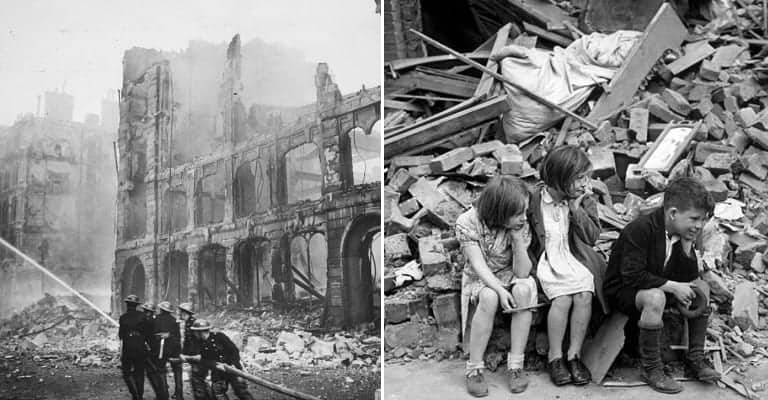The term blitzkrieg was invented by journalists to describe the three-pronged attack unleashed by the German military on Poland during the Second World War. It was started with a smashing air attack, which crushed enemy air forces on the ground, followed by driving columns of armor which broke through enemy defenses, which were then destroyed by the infantry columns. Supporting paratroop forces isolated enemy fortifications. It was a new form of warfare, and its effectiveness against the militaries of Europe was unsurpassed. But it could be stopped, or at least blunted, through control of the air. During the battle for France, British squadrons of fighter planes which were the equal of the best planes of Germany’s Luftwaffe were withheld from the fighting, kept in England for the fighting to come.

With France defeated and Luftwaffe fighters, a short distance away across the channel, England stood alone against the German assault. It has gone down in history as the Battle of Britain, and the phase of the battle in which London was bombed repeatedly is known as the Blitz. London was far from the only city of Great Britain to feel the onslaught of German bombs, but that city’s courage in the face of the attack came to be a symbol of Great Britain. Christopher Wren’s great dome of St. Paul’s Cathedral wreathed in the smoke of London’s many fires became an international icon. England withstood the blitz and the threat of invasion from July 1940 through June 1941, defended by the Royal Air Force, immortalized by Churchill as the few.
Here are some of the incidents of the Battle of Britain and the bombing of London and other British cities during what history knows as the Blitz.

1. Hitler wanted to negotiate peace with Great Britain after France was defeated
By the end of June 1940, Germany’s enemies on the continent of Europe were defeated, and Hitler’s staff hoped to bring about a negotiated peace with Great Britain by enforcing a naval and air blockade against the island, which was unable to feed itself without trade. With the French ports in German hands, the U-boat flotillas were to establish a long-range blockade of the trade routes from the United States and Canada, supported by air bombardments and naval mines along the British coast. German surface raiders also kept the Royal Navy on edge. The British Royal Air Force had not fared well against the German Luftwaffe in France, largely because they were outnumbered and received little effective support from their French allies.
Fighting over Great Britain was a different matter. England had kept a watchful eye on Luftwaffe developments during the 1930s, and the Royal Air Force had prepared to meet a German onslaught through the development of several commands, supported by a system of radar outposts known as Chain Home stations, with fighter squadrons coordinated from the ground to meet oncoming German attacks. The German Luftwaffe had not developed plans for the bombing of cities, regarding such action as a waste of strategic assets which could be better used against defensive establishments and air bases of the enemy. Nor was the bombing of civilians deemed to be a means of bringing about a negotiated peace. When Britain refused to negotiate with the Germans the Luftwaffe was given the destruction of the RAF as its top priority, just as the summer of 1940 began.

